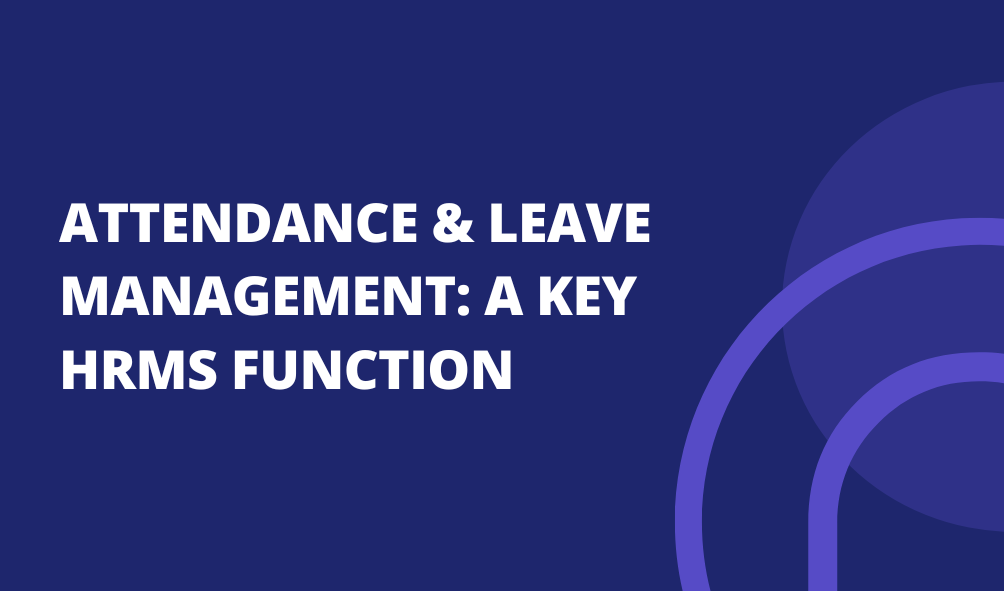HR Compliance: Function Of HRMS
HR Compliance: Function of HRMS
HR compliance is important for businesses. It helps them follow the law and maintain workplace ethics.
Companies must follow labor laws and data security rules. They must align their operations with local, state, and federal laws. This helps them avoid legal risks.
A clear HR compliance management system helps organizations follow HR policies and procedures. It also helps save employee records. It manages disputes and ensures compliance with employment laws.
This guide looks at the basics of human resource compliance. It covers important workplace policies and how businesses can put compliance strategies into action.
1. What is HR Compliance?
Understanding HR Compliance in Business Operations
HR compliance means ensuring a company follows labor laws, safety rules, and ethical practices. Not following these rules can lead to penalties, lawsuits, and damage to the company's reputation.
Businesses must align their operations with key HR regulations, including:
- Employment Laws: Companies must comply with hiring laws, minimum wage regulations, and equal employment opportunities.
- Workplace Safety Policies: Ensuring a safe and secure work environment in compliance with labor safety laws.
- Data Protection & Privacy Regulations: Implementing measures to protect employee and company data from unauthorized access.
- Company-Wide Compliance Standards: Every organization must develop and enforce workplace policies for employee behavior, payroll, leave management, and professional ethics.
A structured HR compliance checklist helps businesses provide compliance with these regulations and minimize risks.
2. Key Areas of HR Compliance & Policies
HR compliance and policies ensure fair workplace practices and legal safety. They cover labor laws, employee rights, and company regulations. Following proper policies helps avoid risks and maintain trust. Learn more about the Human Resource Management Process.
A. HR Policies and Procedures
A comprehensive HR policy and procedures framework sets the foundation for a well-managed and legally compliant workforce. Key policies include:
Employee Code of Conduct – Guidelines for moral workplace behavior, anti-discrimination rules, and conflict resolution.
- Payroll & Benefits Compliance: Providing correct salary payments, tax deductions, and benefits allocation as per HR regulatory compliance standards.
- Workplace Safety & Security: Following human resource compliance regulations to create a safe work environment for employees
- Leave & Attendance Rules: Standard policies for paid leaves, sick leaves, and remote work approvals.
By using a strong HR compliance management system, businesses can provide that policies are applied and updated often.
B. Employee Compliance & Workplace Policies
A strong compliance system ensures that employees understand and adhere to workplace policies, reducing legal risks for businesses. Important areas include:
- Anti-Harassment & Anti-Discrimination: Protecting employees from discrimination at work is important. We need to create a fair work culture for everyone.
- Data Security & Privacy Laws: Preventing unauthorized access to important employee or business information.
- Internet & Social Media Usage: Creating rules for using company networks, email, and social media in a responsible way.
- Professional Conduct & Dress Code : Outlining workplace etiquette and professional appearance expectations.
Employees should receive regular training on these HR policies and procedures to ensure compliance and workplace discipline.
C. HR Regulatory Compliance
Organizations must meet various HR regulatory compliance requirements to avoid legal consequences. These include:
- Minimum Wage & Overtime Rules: Companies must comply with fair wage policies and overtime regulations.
- Equal Opportunity Employment: Following anti-discrimination laws to ensure fair hiring and promotions.
- Health & Safety Standards: Employers must follow workplace safety regulations, such as OSHA guidelines.
- Employee Record-Keeping: Maintaining proper documentation of employee contracts, payroll, tax forms, and performance reviews.
With a well-defined HR compliance checklist, businesses can regularly monitor and update their compliance strategies.
3. Benefits of a Strong HR Compliance System
A well-structured HR compliance management system offers multiple advantages:
- Legal Risk Reduction: Ensures compliance with employment laws, reducing penalties and lawsuits.
- Enhanced Workplace Ethics: A well-defined HR policy and procedures framework promotes ethical conduct.
- Stronger Employee Trust: Employees feel secure when company insurance policies and workplace regulations are transparent.
- Improved Corporate Reputation: Businesses that follow human resource compliance earn credibility in the market.
- Efficient HR Operations: An HR compliance management system simplifies HR processes like payroll, benefits, and leave tracking.
4. How to Implement Effective HR Compliance & Policies?
- Regularly Update Compliance Policies: Keep HR policies and procedures aligned with new labor laws and industry standards.
- Employee Compliance Training: Educate staff about their rights, workplace behavior, and safety policies.
- Consult Legal Experts: Seek professional guidance to ensure HR regulatory compliance.
- Adopt Compliance Management Software: Using an HR compliance management system streamlines policy tracking and reporting.
- Monitor & Document Compliance Efforts: Maintain records of compliance activities to prevent legal issues.
By implementing these strategies, organizations can proactively manage HR compliance and create a legally sound workplace.
Conclusion
A strong HR compliance framework ensures that businesses operate within legal and moral guidelines while fostering a positive work environment. By creating clear workplace policies and following human resource rules, companies can protect their workers.
Using an HR compliance management system helps prevent legal problems. Regularly updating policies, providing compliance training, and keeping good records are important. These steps help maintain a legally secure and well-regulated organization.







